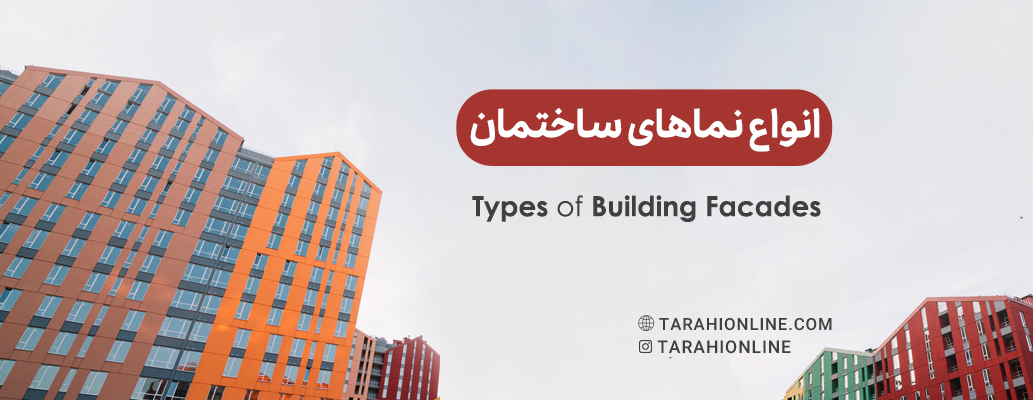
A facade is an architectural element that represents the external face of a building. It provides a visual representation of the building's exterior and includes details such as height, depth, window and door placements, materials used, decorative patterns, and other design elements. Facades not only define the appearance of a building but also establish a relationship between the structure and its surrounding environment.
Types of Building Facades
1. Main Facade (Front Facade)
The main facade, or the front of the building, is often the most important and distinctive face of the structure. It is usually the first thing people notice and serves as the "face" of the building. This facade typically includes the main entrance, display areas, corporate logos, or public spaces.
- Characteristics:
- Precise and attractive design
- Use of high-quality materials and decorations
- Attention to proportion and visual harmony
Example: The main facades of historical buildings such as palaces, museums, or government offices.
2. Side Facades
Side facades, or the lateral faces of a building, are generally less prominent than the main facade but play an important role in completing the overall appearance of the structure. These facades often include secondary entrances, windows, service areas, or private spaces.
- Characteristics:
- Simpler design compared to the main facade
- Focus on functionality and practical use
- Use of more cost-effective materials in some cases
Example: Side facades of residential or commercial buildings facing smaller streets or internal spaces.
3. Rear Facade (Back Facade)
The rear facade, or the back of the building, typically includes service entrances, storage areas, recreational spaces, or private areas. This facade is often less decorated and focuses more on functionality.
- Characteristics:
- Practical and functional design
- Use of durable materials resistant to weather conditions
- Attention to gardens, open spaces, or service equipment
Example: Rear facades of residential buildings facing gardens or open spaces.

4. Roof Facade
The roof facade refers to the upper part of the building and includes elements such as slopes, skylights, antennas, air conditioning units, and other rooftop features.
- Characteristics:
- Focus on structural and functional details
- Use of materials resistant to water and wind
- Design for optimal ventilation and airflow
Example: Roof facades of modern skyscrapers or commercial buildings.
5. Sectional Facade
A sectional facade, or cross-sectional view, shows the interior layout of the building and allows architects to analyze the relationships between different spaces.
- Characteristics:
- Display of structural and engineering details
- Analysis of interior spaces and their interactions
- Used in complex and multi-story designs
Example: Sectional facades of multi-story residential, commercial, or industrial buildings.
6. Decorative Facade
Decorative facades focus on enhancing the aesthetic appeal of the building's exterior. These facades often include patterns, carvings, sculptures, and other decorative elements.
- Characteristics:
- Emphasis on beauty and artistry
- Use of decorative materials such as stone, stucco, or steel
- Creation of a unique identity and character for the building
Example: Decorative facades of cathedrals, mosques, or historical buildings.
7. Minimalist Facade
Minimalist facades aim to reduce unnecessary elements and focus on simplicity and functionality. This style is commonly seen in modern and contemporary architecture.
- Characteristics:
- Use of simple and straight lines
- Reduction of decorative elements
- Focus on functionality and usability
Example: Minimalist facades of modern apartments, offices, or shopping centers.
8. Historical Facade
Historical facades revive traditional and historical architectural styles. These facades often include elements such as carvings, sculptures, columns, and other features associated with specific historical periods.
- Characteristics:
- Emphasis on cultural and historical identity
- Use of traditional materials and methods
- Creation of a connection between past and present
Example: Historical facades of palaces, mosques, churches, or urban heritage buildings.
9. Green Facade
Green facades incorporate natural and sustainable elements into the building's design. These facades often include green walls, rooftop gardens, and other eco-friendly features.
- Characteristics:
- Focus on environmental sustainability
- Use of plants and natural elements
- Creation of healthy and sustainable spaces
Example: Green facades of eco-friendly buildings and urban sustainability projects.
10. Grid Facade
Grid facades are designed based on repetitive patterns or grid systems. These facades often include uniform windows, columns, or other repeated elements that create a sense of symmetry and order.
- Characteristics:
- Emphasis on symmetry and proportion
- Use of repetitive patterns
- Creation of a sense of unity and organization
Example: Grid facades of administrative or industrial buildings focusing on simplicity and order.
The Role of Facades in Architecture
Facades play a vital role in determining the identity and character of a building. They not only define the external appearance but also establish a relationship between the building and its surroundings. Factors such as geographical location, local culture, natural resources, and user demands significantly influence facade design.
Building facades are a critical component of architectural design, helping to define the appearance, function, and identity of structures. Each type of facade has unique characteristics that allow designers to address the needs of users and environmental conditions effectively. With advancements in technology and evolving architectural styles, building facades continue to evolve, playing a significant role in shaping cities and living environments.